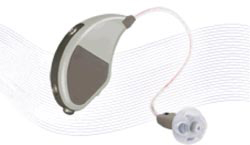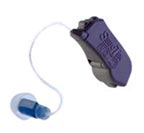Interview with Jim Feeley and Mike Feeley, Founders of Sebotek
Carolyn Smaka: This is Carolyn Smaka from AudiologyOnline, and today I have the pleasure of speaking with Jim and Mike Feeley, the founders of Sebotek (www.sebotek.com).
Welcome, Jim and Mike, and thanks for spending time with AudiologyOnline.
Jim Feeley: We're delighted to be here today.
Mike Feeley: Thank you for having us back, Carolyn.
Smaka: As the founders of SeboTek, can you begin by telling me about how the company got started?
Feeley: We launched our first products to the industry at AAA in 2003. It was our vision to develop a product that could be instantly fit and provide significant improvements over traditional styles of hearing aids, and as a result, we were the first to launch a receiver-in-canal (RIC) device.
We found tremendous success in 2003 when we launched the product, and we still see tremendous success today, both from a Sebotek standpoint with the growth of our products, as well as what we've seen in the industry with the impact that the RIC design has had.
Smaka: Instant fit is definitely a benefit. What are some of the other benefits of RIC technology?
Feeley: There are numerous benefits to the RIC style but let's put them into a few main categories. First of all, RIC provides more opportunity to have additional features while still maintaining a very discrete appearance. If you consider what's important to users, certainly having a discrete fitting is at the top of the list and the RIC design provides that. When you hold the currently available RIC devices in your hand they're much more attractive than traditional hearing devices, and certainly, when they're worn in the ear they're far more discrete than other devices.
Secondly, the RIC design provides more opportunity to increase fidelity. It provides the capability to provide a hi-fidelity bandwidth, which is, from a Sebotek perspective, a key feature. We have been known for our hi-fidelity bandwidth , beyond 8 kHz, with all of our products. Other styles, especially thin tube BTEs, generally have feedback challenges or bandwidth limitations, you have much more flexibility with a RIC. Additionally, since the RIC design does not have the receiver taking up space in the device's casing, there is more space for value-added features such as wireless technology.
Finally, the third category speaks to the ease of fitting which benefits both the professional and the patient. Let's face it, we're living in a "now" generation;everybody wants things instantly. We are all well aware that the baby boomers are now entering the hearing aid market, and when they want something, they want it now. If the average person puts off purchasing hearing instruments for several years, they certainly don't want to wait several more days or weeks after they've made the decision to move forward to be fit with instruments.
The RIC device is perfectly suited for today's hearing care. Today's consumers want a hearing solution now, something that's better than what's been available in the past, and they want something discrete. The RIC meets these needs and more.
Smaka: It is hard to believe that RIC technology was just introduced in 2003 considering this technology really seems to have taken over the market. Do you feel RIC devices have reached their full market potential?
Feeley: Our belief is that we are still at the beginning stages of how the RIC design will ultimately impact the market. We are seeing new products being introduced every day that incorporate RIC technology. Most manufacturers have introduced RIC technology beginning with open RIC devices. Now, we're seeing that expand to closed RIC options for severe and even profound degrees of hearing loss. The RIC design is ideally suited for all of those applications, for fitting mild to profound loss. Not every manufacturer has a RIC product to fit each level of loss yet, but that is rapidly changing.
Smaka: Besides the expanded fitting range of RIC instruments, have there been other changes in RIC devices since 2003?
SeboTek Voice-Q™ 820 Series RIC Device
Feeley: Although there are a lot of different models available, most products are very similar in terms of meeting the definition of a RIC device. They are all modular in terms of providing numerous different receiver length sizes to customize and fit each individual ear. Furthermore, most of the manufacturers provide several different tips and/or earmolds that will couple onto the end of the receiver of a variety of different behind-the-ear processors.
So, the modular aspect has been consistent with all the different manufacturers. What has really been interesting for us, is seeing the influence of the design of RIC technology on hearing aids in general. That is, seeing how other manufacturers have been able to utilize RIC technology and to style it, and how that has impacted the design and style of other BTEs products as well. Prior to 2003, most behind-the-ear hearing devices were not the most attractive. There was a significant stigma attached to behind-the-ear hearing aids;they were big, beige and bulky. Today, that's much different. They are stylish, colorful, and small. They are miniature, yet still full-featured, with a lot of capability and processing power. Overall, they are even more robust.
Smaka: I'm guessing that most professionals have fit RIC technology at this point, but for those who haven't, is there any misinformation out there? What are some misperceptions about RIC devices?
Feeley: That's a good question. The reception of the RIC style has been overwhelmingly positive. However, the only thing I might throw out there, is that there are some people who may believe that RIC devices are only open fit devices. Although there are indeed open fit RIC devices, there are also sealed or closed RIC devices. In other words, open fit is not synonymous with RIC.
As mentioned before, we are seeing new RIC products being introduced to the market that fit very significant hearing losses. In fact, another manufacturer recently launched a new RIC product that is believed to be one of the most powerful devices on the market today, of all devices, both RIC and traditional devices.
SeboTek PAC Voice-Q™ 721
Smaka: What is your vision for RIC technology in the future?
Feeley: We can clearly see the trend in the industry for wireless connectivity, and I think that will ultimately lead to a demand for better fidelity. As an industry, we are at the very beginning stages of this, and a lot of the wireless connectivity currently available is a bit more limited in terms of its fidelity, because of the bandwidth capabilities of the wireless. I think that is going to be changing more and more, and the market is going to demand a higher fidelity device that would be able to stream at a much wider bandwidth.
In our estimation, there's not another product on the market that can handle the size requirements of a wireless receiver, maintain a discrete style and provide a high fidelity of the sound in a RIC style, and this area is ripe for new developments.
People have managed up until now without a wider bandwidth, but once they try the higher fidelity, they recognize its value. This is true whether you are a musician or an everyday user;you learn to appreciate the improvements that you hear with music, speech, and other sounds.
Smaka: Is there research out there suggesting a positive impact of a higher bandwidth on speech recognition performance?
Feeley: There is a lot of room for additional research in that area just because there have not been very many devices that could actually produce the higher bandwidth at user settings in the real world.
Smaka: To shift topics, is there anything professionals need to know if they were going to fit a RIC device in terms of pre-fitting, during the fitting, and with verification and validation?
Feeley: I think it's a pretty short learning curve. In terms of fitting verification and doing real ear measurements, it actually makes it easier than a lot of other styles to position the mic probe. It is an easy style to fit. That was part of our vision from the beginning, to make it more efficient and easier for the professional to fit and easier for the user to acclimate to and wear.
Smaka: Jim and Mike, thank you for sharing your vision and experience with RIC devices. Before we end for the day, what is new with SeboTek? What do you have in store for the year ahead?
Feeley: Things are going very well at Sebotek. 2009 is on track to be one of our best years. We're continuing to grow and add a number of new markets, so our sales have been up. We have added resources to our research and development, and we are going to be introducing some new products very soon, so you can see we're pretty busy these days.
Smaka: New products?! Do tell! [laughs]
Feeley: [laughs]. We can't share too much about the new products at this time, except to say that they'll be released in the coming months and that we think the industry will find them pretty exciting.
Smaka: Well then I'll look forward to speaking with you about those products when they're released. Mike and Jim, thank you for all your time today.
For more information on Sebotek, please visit the Sebotek Web Channel on AudiologyOnline or www.sebotek.com,
Jim Feeley: Carolyn, thank you very much.
Mike Feeley: We appreciate it.
